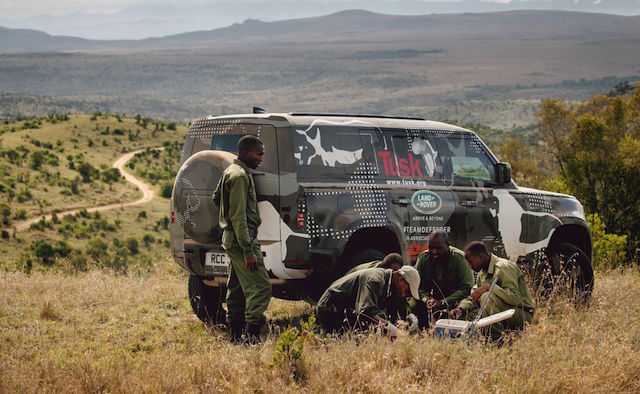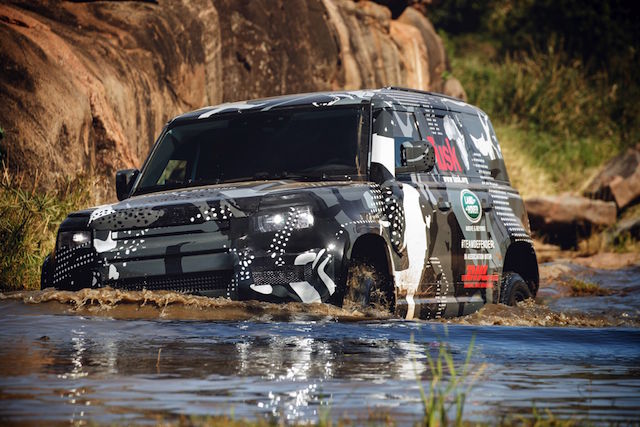
My love affair with Land Rovers began as a boy on the family farm in the 1950s. Sixty-plus years later the relationship had neared breaking point. I fear it is beyond reconciliation. Maybe, just maybe, the new Defender can salvage it.
Back on the farm all those years ago, my dad used the power takeoff (PTO) on an early Series 1 Land Rover to run a sawbench to cut fence posts and firewood. Most of the firewood came from big macrocarpa stumps.
We’d blow them up with gelignite. Workplace Health and Safety NZ wasn’t around back then. I’d help dad drill holes in the base of the stumps with an auger. He’d fill the holes with plugs of ‘jelly’, set the fuses, and we’d skedaddle back behind the Land Rover.
Boom! It was a win-win. We got firewood and helped clear the land for seeding at the same time. Dad blew things up in North Africa and Italy during World War II.
I inherited his 88-inch Series II Land Rover. Still my favourite, the Series II. You could fix it with a fence batten. That four-cylinder 2.25-litre petrol engine was a beaut.
Land Rover was still using the 2.25 donk in the early 1980s. They had a handful of Series III models as support vehicles for the Camel Rally in Papua New Guinea (PNG).
It was 1982 and I was editor of one of PNG’s two daily newspapers. The Camel organisers asked if I would store the participating Land Rovers (among them was a prototype of the first four-door Range Rover Classic) in the newspaper compound. It was surrounded by a 3.6m-high security fence.
A few years later I was living in England. Bought myself a Series III off the British Army. A 109-inch station wagon, built in 1976, and running the 2.25 donk.
Drove it over all types of country in England, Wales and Scotland. Army mechanics had certainly looked after it.
Toyed with shipping it to Canada’s east coast and driving to Vancouver. Shipped it back to New Zealand instead. Sold it after a couple of years. Don’t know why.
Next stop on the Land Rover trail was with Land Rover itself, in 1995, at the launch of the second-generation Range Rover.
It came with the choice of three engines: 4.0-litre V8, 4.6-litre V8, 2.5-litre straight-six BMW diesel. The 4.6-litre especially had problems with cylinder liners. Steer away from second-hand ones, a Land Rover engineer told me over a beer.
Drove Land and Range Rovers here and there for the next 16-18 years or so, including the launch of the Evoque in Snowdonia, Wales. An annoying hiccup every so often – mostly electronic – but nothing that crippled the cars.
That changed in 2016. A mate and me couldn’t get a Discovery 4 off the beach through fairly demanding sand dunes. Electronic traction control kept shutting down progress – even after we did what the owner’s manual said to do to turn it off. It doesn’t turn off, not totally, not via the button on the dash, not without plugging a laptop computer into the management system.
Months later I’m heading north from Auckland in a Defender 90 to a mate’s farm. Stopped in Dargaville to top up with diesel. Couldn’t unlock the fuel cap. Service station blokes, bystanders, all had a go. Breaking it wasn’t an option. Turned out Land Rover had to import a new fuel cap assembly from its Asia Pacific warehouse in Singapore.
Discovery Sport gave me grief, too, hours after I picked it up. Remote wouldn’t unlock it. Took remote apart to use emergency wand/key to open driver’s door. Alarm goes off. Hell of a racket. Can’t start car. Tow truck takes it back to Land Rover. Problem had something to do with changing the electronic wish-list during a training programme, they said.
Now the new Defender is on its way. Chockabloc with electronics it is too. The pictures on this page show a prototype Defender testing in Kenya. The blokes in the picture at the top seem preoccupied. Hope they’re not trying to figure out how to get it going again.
Tracking the first Land-Rover to NZ ends in 1948 in Wellington …


